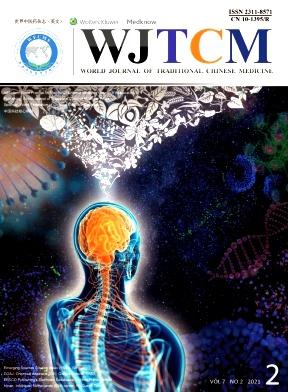Effectiveness and safety of moxibustion for poststroke insomnia: A systematic review and meta-analysis
IF 3.2
3区 医学
Q1 INTEGRATIVE & COMPLEMENTARY MEDICINE
引用次数: 8
Abstract
Objective: This study aimed to systematically evaluate the clinical efficiency and safety of moxibustion for the treatment of poststroke insomnia (PSI). Methods: We searched PubMed, the Cochrane Library, Embase, China National Knowledge Infrastructure (CNKI), Wanfang Data Knowledge Service platform (Wanfang Data), Chinese Scientific Journal Database (VIP), and clinical rial for trandomized controlled trials on moxibustion as a treatment for PSI, including results from the creation of all databases until December 12, 2020. The functional languages used were Chinese and English. Two reviewers independently performed the literature search, data extraction, and quality evaluation. The primary and secondary outcome measures were the effective rate and adverse events, respectively. The meta-analysis was carried out using RevMan5.4 software and Stata15. Results: Of the 11 trials, 996 patients in mainland China were included. Compared to the control group, the combination of single moxibustion therapy or moxibustion combined with acupuncture in the treatment of DN could reduce the sleep quality score (SQS) (mean difference [MD] = −0.50, 95% confidence interval [CI] [ − 0.89, −0.11], Z = 2.51, P = 0.01), time to falling asleep score (MD = −0.39, 95% CI [−0.49, −0.29], Z = 7.79, P < 0.00001), sleep time score (MD = −0.34, 95% CI [−0.59, −0.09], Z = 2.64, P = 0.008), sleep efficiency score (MD = −0.30, 95% CI [−0.52, −0.08], Z = 2.69, P = 0.007), sleep disorder score (MD = −0.29, 95% CI [−0.49, −0.09], Z = 2.85, P = 0.004), daily function disturbance score (MD = −0.54, 95% CI [−0.82, −0.26], Z = 3.78, P = 0.0002), Pittsburgh Sleep Quality Index aggregate score (MD = −2.30, 95% CI [−2.97, −1.63], Z = 6.71, P < 0.00001), SPIEGEL aggregate score (MD = −7.62, 95% CI [−8.12, −7.12], Z = 29.75, P < 0.00001), and stroke-specific quality of life aggregate score (MD = 12.68, 95% CI [0.92, 24.44], Z = 2.11, P = 0.03). Conclusion: This study indicates that moxibustion contributes to the treatment of PSI. Nevertheless, more extensive trials are required to validate the results due to the small sample sizes, few reports on adverse effects, and high risk of bias in the included studies.艾灸治疗脑卒中后失眠的有效性和安全性:一项系统综述和荟萃分析
目的:系统评价艾灸治疗脑卒中后失眠的临床疗效和安全性。方法:我们检索PubMed、Cochrane Library、Embase、中国知识基础设施(CNKI)、万方数据知识服务平台(万方数据)、中国科学期刊数据库(VIP)和临床资料,了解艾灸治疗PSI的转胺对照试验,包括截至2020年12月12日所有数据库的创建结果。使用的功能语言有中文和英文。两名评审员独立进行了文献检索、数据提取和质量评估。主要和次要结果指标分别为有效率和不良事件。使用RevMan5.4软件和Stata15进行荟萃分析。结果:在11项试验中,996名中国大陆患者被纳入。与对照组相比,单纯艾灸治疗或艾灸结合针灸治疗DN可降低睡眠质量评分(SQS)(平均差[MD]=-0.50,95%置信区间[CI][-0.89,−0.11],Z=2.51,P=0.001)、入睡时间评分(MD=-0.39,95%CI[-0.49,−0.29],Z=7.79,P<0.0001),睡眠时间得分(MD=−0.34,95%置信区间[-0.59,−0.09],Z=2.64,P=0.008),睡眠效率得分(MD=-0.30,95%可信区间[-0.52,−0.08],Z=2.69,P=0.007),睡眠障碍得分,匹兹堡睡眠质量指数总分(MD=−2.30,95%置信区间[-2.97,−1.63],Z=6.71,P<0.00001),SPIEGEL总分(MD=−7.62,95%可信区间[-8.12,−7.12],Z=29.75,P<.00001),和脑卒中特异性生活质量总分(MD=12.68,95%CI[0.92,24.44],Z=2.11,P=0.03)。尽管如此,由于纳入的研究样本量小、不良反应报告少、偏倚风险高,还需要更广泛的试验来验证结果。
本文章由计算机程序翻译,如有差异,请以英文原文为准。
求助全文
约1分钟内获得全文
求助全文
来源期刊

World Journal of Traditional Chinese Medicine
Medicine-Complementary and Alternative Medicine
CiteScore
5.40
自引率
2.30%
发文量
259
审稿时长
24 weeks
 求助内容:
求助内容: 应助结果提醒方式:
应助结果提醒方式:


